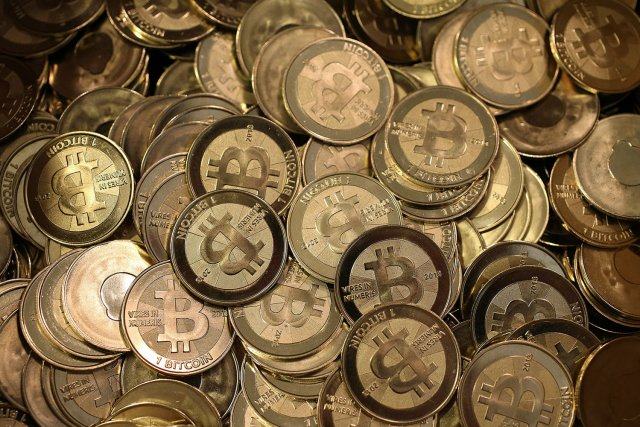
The Guardian and other titles report today that the Bitcoin blockchain includes illegal material. However, this kind of problem has been known about for years, according to insiders.
UPDATED Illegal images have been found stored in Bitcoin’s blockchain, according to researchers at a German university.
The Guardian reports that a team from the RWTH Aachen University in Germany found that around 1,600 files were stored in the blockchain. Of these files, at least eight were found to include sexual content.
One is thought to be an image involving a minor, while two contain a total of 274 links to similar illegal content, 142 of which link to dark Web services, according to the report.
Distributed ledger technologies such as Blockchain and hashgraph substitute networked computation for other trusted systems. Each block in the chain contains a hash of the previous one, and so blockchain is regarded by its many proponents as an inviolable – and permanent – system of record.
This particular blockchain contains a record of all Bitcoin transactions. However, any blockchain can also store small pieces of other data, which may be of any type – including links or images – restricted only by the technology’s 1MB file storage limit.
While no legal precedent exists, this particular discovery has serious implications, as it could render participation in the blockchain illegal.
The researchers wrote:
Since all blockchain data is downloaded and persistently stored by users, they are liable for any objectionable content added to the blockchain by others.”
“Consequently, it would be illegal to participate in a blockchain-based system as soon as it contains illegal content.”
But are the German researchers’ findings a revelation?
Blockchain graffiti
Yes and no. The Daily Dot and CNNtech reported that links to illegal porn had been discovered in the Bitcoin blockchain as long ago as 2013, but not actual images.
And the question of what would happen if a blockchain was used to store illegal porn was raised on this Reddit in 2013 (reader discretion advised). It’s conceivable that someone saw that question as a challenge.
More, a source told Internet of Business that the risk of potentially illegal content being secreted in blockchains was discussed in 2014 at the SXSW festival in the US.
Meanwhile, this 2014 tech blog reveals the extraordinary range of material that the writer had already found stored in the Bitcoin blockchain. This included photographs, illegal primes, an image of Nelson Mandela, Python software, leaked firmware keys, Valentine’s Day messages, Wikileaks data, an email, unknown encrypted content, and a Hex-encoded image of Ben Bernanke, then chairman of the Federal Reserve.
So the discovery of illegal porn images in the Bitcoin blockchain is new, but the issue of the blockchain carrying other illegal material, links, and whatever else coders found amusing, has been known about for at least five years.
The existence of actual images – of the most insidious kind, involving minors – changes the legal dimension of the problem.
Internet of Business says
If anyone wanted to discredit either blockchain technology, Bitcoin, or cryptocurrencies, then this latest report – shared widely across the internet today – would be the way to do it.
It’s clear that the Bitcoin blockchain has been the subject of coder graffiti, in effect, probably since its inception. This suggests that other blockchains may have been too.
The problem may be endemic, in fact – just as countless technologies have been defaced, hacked, or corrupted over the years, in most cases ‘just because they’re there’. It’s the spam problem all over again.
However, there’s a major difference. Countless technologies may have been used to distribute illegal and offensive material – including the World Wide Web and mobile phones, of course – but the distribution of that material online, or via a teenager’s sexting, hasn’t made owning a smartphone or laptop illegal for everyone else.
The revelation that the Bitcoin blockchain actually contains illegal porn – rather than links to illicit material – potentially creates a serious legal problem. Especially now that revelations about other illegal material and digital clutter have left the rarefied world of coders’ message boards and entered the public domain.
Whether or not it might be ‘old news’ to some technology insiders, today’s reports expose a real problem with distributed ledger systems – which, ironically, seek to reinforce trust in data.
Speaking to Internet of Business today, freelance writer Tom Hughes said, “Blockchain basically replaces trust with huge amounts of computation. It’s not an efficient trade, because you can never design something perfect.
“[With most technology systems] the idea is you design something that works and then iteratively fix it, not design something that you cannot change later. If you go back and clean it up, it invalidates the entire blockchain. It’s a geeky view of the world, rather than a practical one.”
And blockchains, demonstrably, encourage geeky, ‘look at me’ behaviour – the equivalent of throwing a brick through a window or tagging the buildings along a railway line.
Blockchain technology seeks to reinforce trust in data by flattening ownership of it, creating a commons – a collective of processors, in effect – which can provide an audit trail of approved transactions.
In itself, that’s a brilliant idea. But there’s a different kind of trust involved, too: trust that the data itself is legal. That may prove to be critical in whether blockchain-based systems can be trusted in enterprise applications, or to run critical systems.
This is no minor issue. Some coders – who MIT Media Lab chief Joichi Ito claimed last year are sometimes “oddballs” who prefer computers to people – might be amused by hiding messages, in-jokes, or other material in blockchains, but there comes a point when it is no longer a joke. We reached that point today.
Our recent story about the Qarnot QC1 device – the room heater that’s also a cryptocurrency miner – emphasised this flaw. With no screen and a great deal of heat emanating from it, that networked device could be processing literally anything.
![[お知らせ]日本語サイトの更新停止のお知らせ](https://www.jbb.one/f/dynamic/img/89f47dd670454ab9a00a8a95501a0b12.png!sss)







